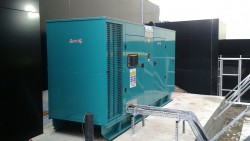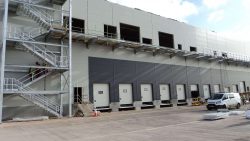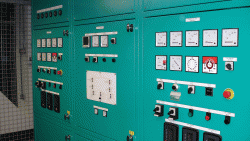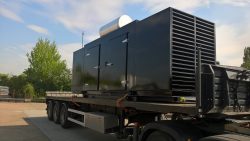300kVA Standby Generator Installation
The project was to supply, install and commission a new permanent 300kVA standby generator providing backup power for a Subscription Management Service Company. Due to the existing site layout a base and perimeter fencing needed to be installed to house the new generator. To ascertain the underground services local to the proposed location of the standby generator a CAT scan was carried out to survey the area so as not to install the new base over any utility services.
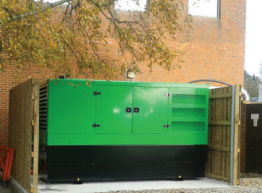 The result of the scan flagged up that services were present so it was necessary to alter the location of the base. Following the agreement of the base location ground works could start, the area was excavated and levelled ready for the 5 meter x 4 meter concrete base to be poured to contain the generator and fix the fence to. Owing to the height of the generator an 8 foot close boarded fence was required to conceal it. When the base was cast and cured three sides of the fence were erected leaving only the opening closest to the road open so our delivery vehicle could park adjacent to offload the standby generator into the new compound. Once the generator was unloaded it was carefully manoeuvred into its final position by our engineers using plant skates and jacks. The final section of the fence was then installed, the work face cleaned and all rubbish and tools removed.
The result of the scan flagged up that services were present so it was necessary to alter the location of the base. Following the agreement of the base location ground works could start, the area was excavated and levelled ready for the 5 meter x 4 meter concrete base to be poured to contain the generator and fix the fence to. Owing to the height of the generator an 8 foot close boarded fence was required to conceal it. When the base was cast and cured three sides of the fence were erected leaving only the opening closest to the road open so our delivery vehicle could park adjacent to offload the standby generator into the new compound. Once the generator was unloaded it was carefully manoeuvred into its final position by our engineers using plant skates and jacks. The final section of the fence was then installed, the work face cleaned and all rubbish and tools removed.
The second stage of the project was to install the new cable containment from the HV/LV compound next to the new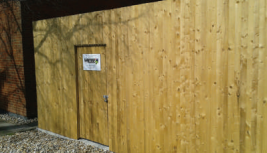 enclosure. To avoid any further ground works, the new cable containment was taken from the compound up and over the walkway into the new standby generator compound. On completion of the cable containment system a new Auto Transfer Switch [ATS] was installed within the compound. To reduce the shutdown period associated with the final electrical changeover, all cabling was installed from the HV/LV compound to the ATS and terminated and tested.
enclosure. To avoid any further ground works, the new cable containment was taken from the compound up and over the walkway into the new standby generator compound. On completion of the cable containment system a new Auto Transfer Switch [ATS] was installed within the compound. To reduce the shutdown period associated with the final electrical changeover, all cabling was installed from the HV/LV compound to the ATS and terminated and tested.
To connect the new standby generator into the existing building supply, the feed from the LV panel in the HV/LV compound to clients LV panel in the ground floor switch room needed to be disconnected. Due to the age of the existing HV/LV transformer it was not possible to open the LV fuse way because of exposed live bars. This prevented us pulling the fuses to isolate the supply enabling us to complete the cable termination.
As a result of restricted space in the HV/LV compound and the necessity for a full HV shutdown to disconnect the LV cable from the HV/LV sub, it was decided that the cables would be better terminated via resin joints and buried. To complete these works it was crucial to isolate two HV transformers on the site’s HV ring to enable the ground works to be completed the weekend before the changeover was planned. It was vital that the client could not have any power outage for more than 15 minutes due to their UPS, it was agreed that a temporary generator was to be installed by our rental department, Powerhire. The Generator Company, working with the clients IT department and senior management team, proposed a plan for the client’s IT system to be reconfigured and the temporary generator set connected to a suitable point.
To enable the temporary generator to be connected, temporary cables were run up a stairwell and into the rooftop plant room and terminated to a part redundant HVAC panel that was fed from the ground floor main LV panel enabling us to back feed the building.
On isolation of the HV ring the HV compound was excavated by hand to expose the LV cable in the LV chamber allowing us to make room for the new resin joints to be completed. The excavated hole was covered with ply sheets and power reinstated back to mains ready for the changeover the following weekend. The temporary generator was removed at this stage as power had been restored to the building.
A full HV shut down was required the following weekend to allow us complete the disconnection and changeover of the building supply. Again, due to the critical nature of the clients IT services a temporary generator was installed whilst works were being carried out. Once the changeover was completed a full day of system testing was carried out proving the system met the client’s requirements.
